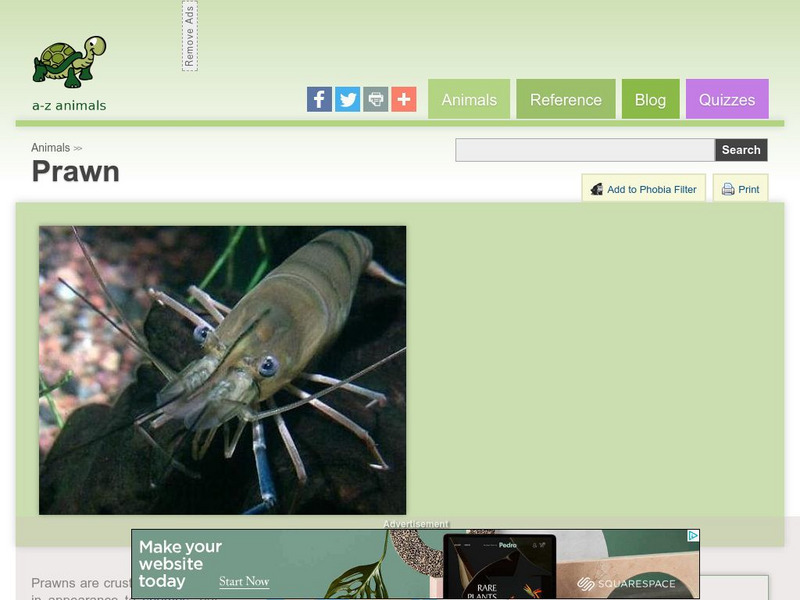Hi, what do you want to do?
Curated OER
Forest Life- Wood Bug Study
Examine wood bugs and their habitat. Learners gather wood bugs and examine their bodies. Then discuss their body parts and how they help them survive. They also predict where they think wood bugs live to then graph the class results.
Curated OER
Homes for Hermit Crabs
Students discover the differences between hermit crabs and mollusks and identify their parts. After reading a story about hermit crabs, they complete an anatomy worksheet. For another activity, students fold and cut a diagram of a hermit...
Curated OER
Opae Obstacles
Students explore the life cycle of shrimp. In this life cycle lesson, students research the different stages of a shrimp's life cycle. Students examine threats to the species in each stage of life.
Curated OER
Through Other Eyes
Students describe the structures of crustaceans and the features that give organisms capabilities that exceed those of humans. In this investigative lesson students replicate some of the features of photo-receptors in a deep-sea...
Curated OER
Minibeasts: What Sort is It?
In this insect related worksheet, students research and describe a variety of insects to see if they have several legs or a large foot. Students then decide what type of insects they are dealing with.
Cornell University
Cornell University: The Crayfish Review
An excellent interactive site about the physical features of thier crayfish and their functions. This site was created for a college class, but can be used by all ages.
Unite for Literacy
Unite for Literacy: Animals: Roly Poly
Read facts about the amazing pillbug and how this crustacean helps humans. Includes audio narration in 6 additional languages with text in English.
University of California
University of California Museum of Paleontology: The Arthropod Story
Go back in time to discover the evolutionary story of the arthropod and what this phylum of the animal kingdom looks like today.
University of Southern California
Structure of Matter: Animals
A slide show that demonstrates the development of physical structure in the animal world, moving from sponges through mammals.
Microscopy UK
Microscopy Uk: Rotifers and How to Find Them
Interesting discussion of rotifer anatomy, habitat, feeding habits, locomotion, and species.
Other
N. Carolina Dep. Of Environment & Natural Resources: Cool Kids: Crustaceans
There is all kinds of information about crustaceans available at this site from the North Carolina Department of Marine Fisheries. You can see what types of shrimp and crabs are in the area or connect the dots of your own crustacean.
US Geological Survey
Usgs: Brine Shrimp
Vivid descriptions on the life cycle of brine shrimp and ecology within the Great Salt Lake.
Other
Using Acoustics to Monitor Krill Populations
Discussion and graphs discussing the importance of finding a large abundance of krill.
University of Michigan
Critter Catalog: Myriapods
This informative site provides a description of the characteristics of Myriapods. Local animals (southeastern Michigan) in these groups are then examined in further detail. Pictures and classification groupings are included in this site.
Natural History Museum
The Natural History Museum: Chinese Mitten Crab
Brief information about these crabs and the environmental problems which they may cause.
Environmental Education for Kids
Eek!: Alien Profile: Spiny Water Flea
Learn how the spiny water flea first came to North America, where it has spread to, how to identify it, how it is dispersed, the damage it causes, and what can be done to fight this invasive species.
A-Z Animals
A Z Animals: Animal Facts: Prawn (Dendrobranchiata)
Provides photograph and facts about the prawn, a crustacean. Discusses physical characteristics, where they are found, diet, and how humans use them.
Songs for Teaching
No Backbone Beat
Learn your invertebrates with this great rap. Your students will be walking through the halls singing this rap, when you begin your invertebrate unit with it. It covers protozoan, metazoan, arthropods, and more.





















